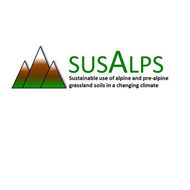Disentangling climate from soil nutrient effects on plant biomass production using a multispecies phytometer (2021.0)
Wilfahrt P., Schweiger A., Abrantes N., Arfin‐Khan M., Bahn M., Berauer B., Bierbaumer M., Djukic I., Dusseldorp M., Eibes P., Estiarte M., Hessberg A., Holub P., Ingrisch J., Schmidt I., Kesic L., Klem K., Kröel‐Dulay G., Larsen K., Lõhmus K., Mänd P., Orbán I., Orlovic S., Peñuelas J., Reinthaler D., Radujković D., Schuchardt M., Schweiger J., Stojnic S., Tietema A., Urban O., Vicca S., Jentsch A.
Ecosphere, 12 (8),
Abstract
Plant community biomass production is co-dependent on climatic and edaphic factors that are often covarying and non-independent. Disentangling how these factors act in isolation is challenging, especially along large climatic gradients that can mask soil effects. As anthropogenic pressure increasingly alters local climate and soil resource supply unevenly across landscapes, our ability to predict concurrent changes in plant community processes requires clearer understandings of independent and interactive effects of climate and soil. To address this, we developed a multispecies phytometer (i.e., standardized plant community) for separating key drivers underlying plant productivity across gradients. Phytometers were composed of three globally cosmopolitan herbaceous perennials, Dactylis glomerata, Plantago lanceolata, and Trifolium pratense. In 2017, we grew phytometer communities in 18 sites across a pan-European aridity gradient in local site soils and a standardized substrate and compared biomass production. Standard substrate phytometers succeeded in providing a standardized climate biomass response independent of local soil effects. This allowed us to factor out climate effects in local soil phytometers, establishing that nitrogen availability did not predict biomass production, while phosphorus availability exerted a strong, positive effect independent of climate. Additionally, we identified a negative relationship between biomass production and potassium and magnesium availability. Species-specific biomass responses to the environment in the climate-corrected biomass were asynchronous, demonstrating the importance of species interactions in vegetation responses to global change. Biomass production was co-limited by climatic and soil drivers, with each species experiencing its own unique set of co-limitations. Our study demonstrates the potential of phytometers for disentangling effects of climate and soil on plant biomass production and suggests an increasing role of P limitation in the temperate regions of Europe.
